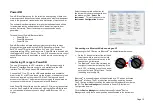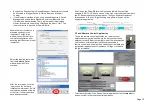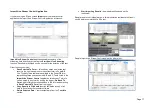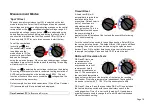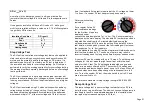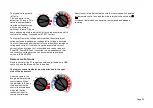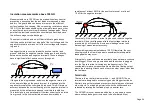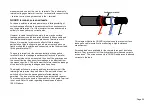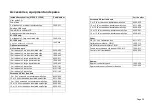
Page 25
measurements use just the + and – terminals. The instrument’s
internal voltage generator drives the + terminal with respect to the
– terminal, current being measured in the – terminal.
GUARD terminal, screened leads
For basic insulation tests and where there is
little possibility of
surface leakage affecting the measurement
it is unnecessary to
use the guard terminal, i.e. if the insulator is clean and there are
unlikely to be any adverse current paths.
However in cable testing for example, there may be surface
leakage paths across the insulation between the bare cable and
the external sheathing due to the presence of moisture or dirt.
Where it is required to remove the effect of this leakage,
particularly at high testing voltages, a bare wire may be bound
tightly around the insulation and connected via the third test lead
to the guard terminal ‘G’.
The guard terminal is at the same potential as the negative
terminal. Since the leakage resistance is effectively in parallel
with the resistance to be measured, the use of the guard causes
the current flowing through surface leakage to be diverted from
the measuring circuit. The instrument therefore reads the leakage
of the insulator, ignoring leakage across its surface.
The display will show a warning and fuse terminal symbol if the
internal guard terminal fuse has blown. The instrument must be
switched off to clear the message before further testing is
permitted. The fuse must be replaced by an authorised repairer.
The instrument may be used in the meantime if the guard terminal
is not used. Refer to notes regarding measurements above
100 G
Ω
above.
This diagram illustrates GUARD terminal used to prevent surface
leakage on cable insulation from affecting a high resistance
measurement.
Screened leads are available for the complete range of insulation
testers. They are useful in HV switchyards where induced currents
are an issue. The screen connects to GUARD and prevents induced
currents in the lead.





